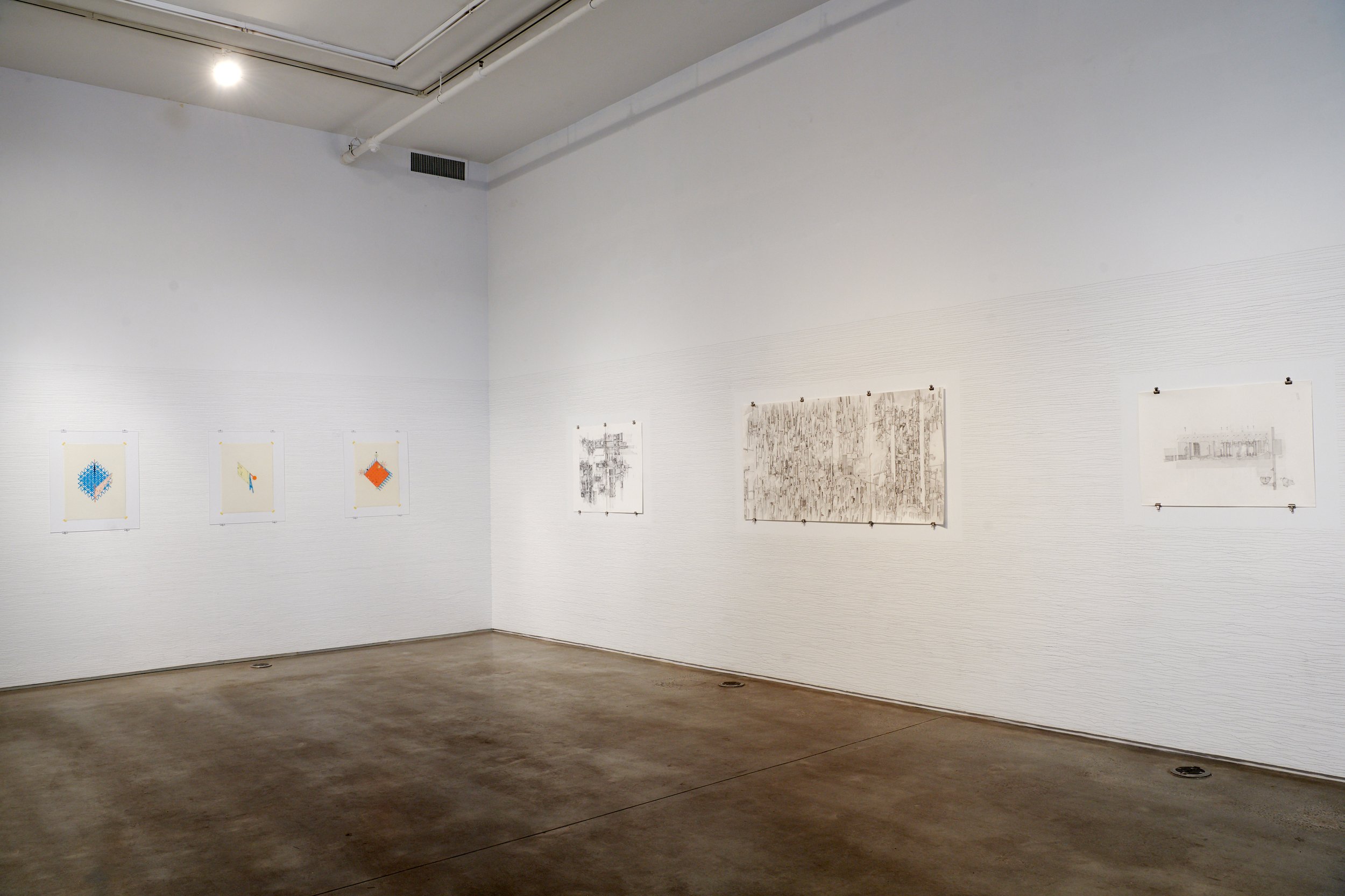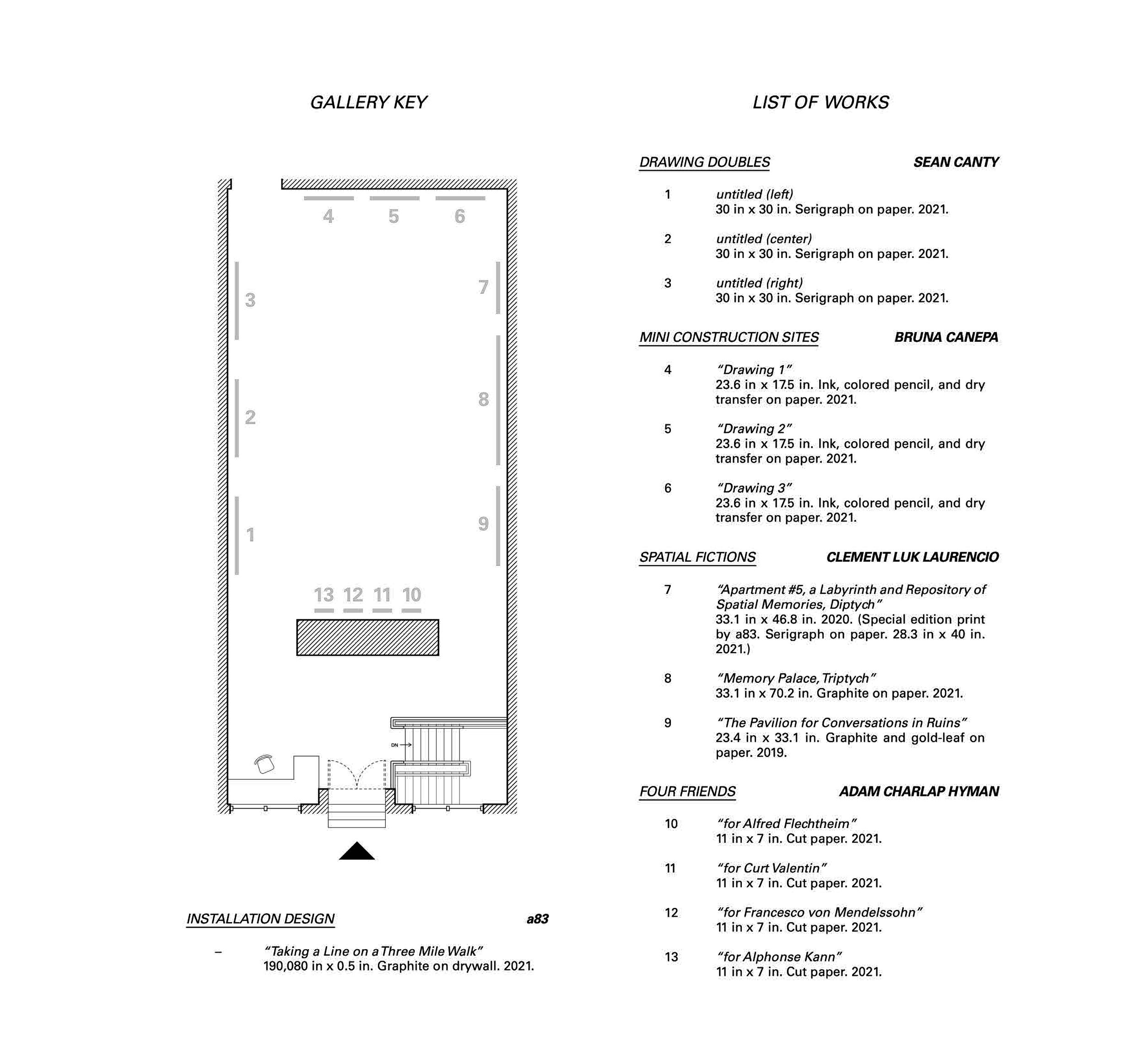Drawing is the principal medium of architecture. If the building is the ultimate effect of architectural drawing then the drawing itself is a means to an end. Alternatively, if the drawing is the product of architectural labor, then the building is a translation of drawings—inevitably an imperfect interpretation, compromised by gravity and contractors. What might it mean, then, to make architectural drawings if not for construction? This exhibition shares answers from four designers: Bruna Canepa, Sean Canty, Adam Charlap Hyman, and Clement Laurencio. Their approaches and concerns differ except for their common commitment to producing works on paper.
These designers prove that fantastic things can happen when architectural drawing is let loose from its role in guiding construction. The drawings represent nothing but themselves: the line represents a line, and it is always at a scale of 1:1. Unlike digital models, these drawings do not follow the rules of our three-dimensional world. They exploit the liberties of pictorial space, delineating imaginative forms and impossible perspectives. Drawing by hand produces irreducibly real things, a counterpoint to the virtual image. The drawings materialize the decision-making process of design. It is a physically impressive act, as athletic as it is deliberative. Built up on ground, drawings are—like buildings—constructed.
June 3 — July 9, 2021 at a83, 83 Grand Street, New York, NY





















